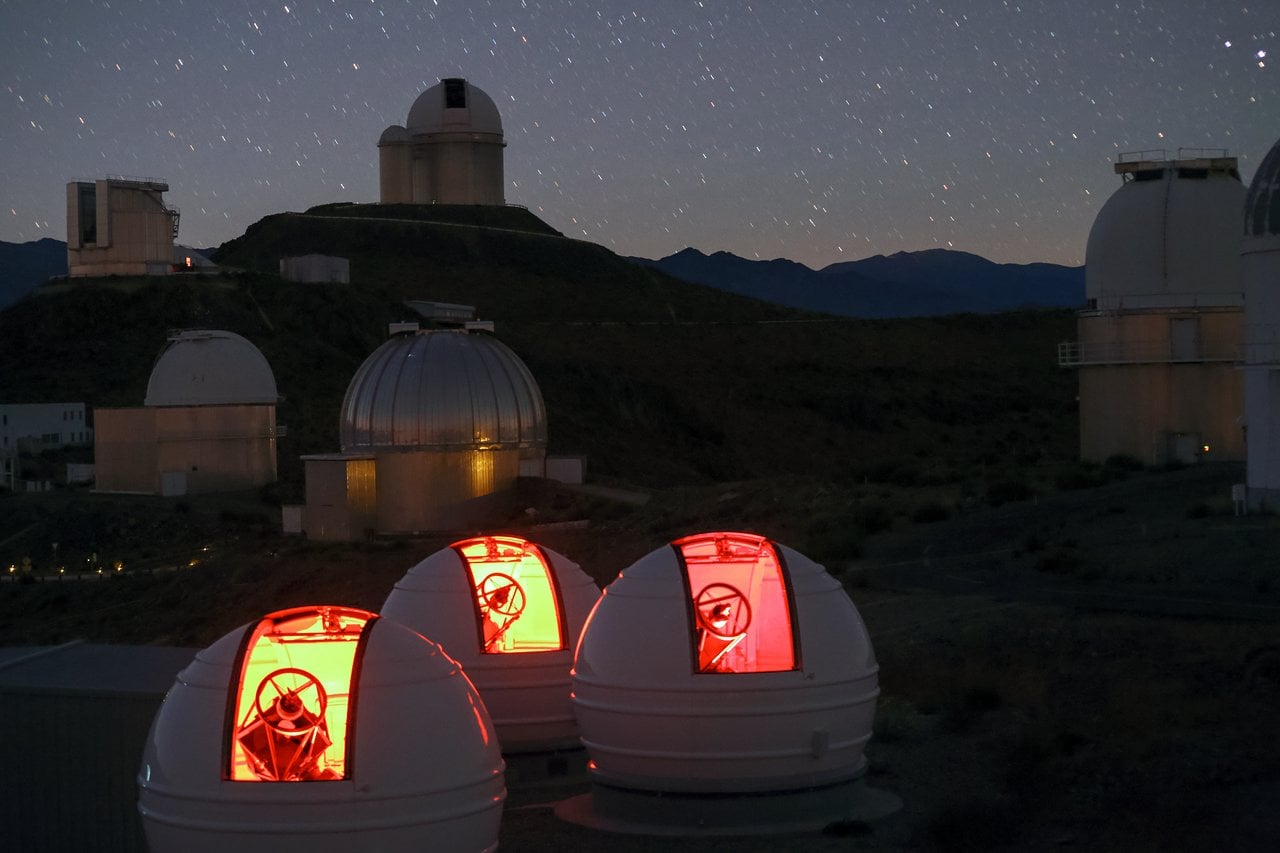Ever since the
Kepler space telescope
began discovering thousands of exoplanets in our galaxy, astronomers have been eagerly awaiting the day when next-generation missions are deployed. These include the much-anticipated
*James Webb Space Telescope*
, which is scheduled to take to space in 2019, but also the many ground-based observatories that are currently being constructed.
One of these is the
Exoplanets in Transits and their Atmospheres
(ExTrA) project, which is the latest addition to the ESO's
La Silla Observatory
in Chile. Using the
Transit Method
, this facility will rely on three 60-centimeter (23.6 in) telescopes to search for Earth-sized exoplanets around M-type (red dwarf) stars in the Milky Way Galaxy. This week, the facility began by collecting
its first light
.
The Transit Method (aka. Transit Photometry) consists of monitoring stars for periodic dips in brightness. These dips are caused by planets passing in front of the star (aka. transiting) relative to the observer. In the past, detecting planets around M-type stars using this method has been challenging since red dwarfs are the smallest and dimmest class of star in the known Universe and emit the majority of their light in the near-infrared band.
[caption id="attachment_128677" align="aligncenter" width="580"]
Artist's impression of rocky exoplanets orbiting Gliese 832, a red dwarf star just 16 light-years from Earth. Credit: ESO/M. Kornmesser/N. Risinger (skysurvey.org).
[/caption]
However, these stars have also proven to be treasure trove when it comes to rocky, Earth-like exoplanets. In recent years, rocky planets have been discovered around star's like
Proxima Centauri
and
Ross 128
, while
TRAPPIST-1
had a system of seven rocky planets. In addition, there have been studies that have indicated that potentially-habitable, rocky planets
could be very common
around red dwarf stars.
Unlike other facilities, the ExTrA project is well-suited to conduct surveys for planets around red dwrfs because of its location on the outskirts of
the Atacama Desert in Chile
. As Xavier Bonfils, the project's lead researcher,
explained
:
" La Silla was selected as the home of the telescopes because of the site’s excellent atmospheric conditions. The kind of light we are observing - near-infrared - is very easily absorbed by Earth’s atmosphere, so we required the driest and darkest conditions possible. La Silla is a perfect match to our specifications. "
In addition, the ExTrA facility will rely on a novel approach that involves combining optical photometry with spectroscopic information. This consists of its three telescopes collecting light from a target star and four companion stars for comparison. This light is then fed through optical fibers into a multi-object spectrograph in order to analyze it in many different wavelengths.
[caption id="attachment_138375" align="aligncenter" width="580"]
The ExTrA telescopes are sited at ESO's La Silla Observatory in Chile. Credit: ESO/Petr Horálek
[/caption]
This approach increases the level of achievable precision and helps mitigate the disruptive effect of Earth's atmosphere, as well as the potential for error introduced by instruments and detectors. Beyond the goal of simply finding planets transiting in front of their red dwarf stars, the ExTrA telescopes will also study the planets it finds in order to determine their compositions and their atmospheres.
In short, it will help determine whether or not these planets could truly be habitable. As Jose-Manuel Almenara, a member of the ExTrA team,
explained
:
" With ExTrA, we can also address some fundamental questions about planets in our galaxy. We hope to explore how common these planets are, the behaviour of multi-planet systems, and the sorts of environments that lead to their formation, "
The potential to search for extra-solar planets around red dwarf stars is an immense opportunity for astronomers. Not only are they the most common star in the Universe, accounting for 70% of stars in our galaxy alone, they are also very long-lived. Whereas stars like our Sun have a lifespan of about
10 billion years
, red dwarfs are capable of remaining in their main sequence phase for up to 10 trillion years.
[caption id="attachment_130430" align="aligncenter" width="580"]
Artist's impression of Proxima b, which was discovered using the Radial Velocity method. Credit: ESO/M. Kornmesser
[/caption]
For these reasons, there are those who think that M-type stars are our best bet for
finding habitable planets
in the long run. At the same time, there are unresolved questions about whether or not planets that orbit red dwarf stars can stay
habitable for long
, owing to their variability and
tendency to flare up
. But with ExTrA and other next-generation instruments entering into service, astronomers may be able to address these burning questions.
As Bonfils excitedly
put it
:
" "
ExTrA is a French project funded by the
European Research Council
and the French
Agence National de la Recherche
and its telescopes will be operated remotely from Grenoble, France. Also, be sure to enjoy this video of the ExTrA going online, courtesy of the ESOcast:
Further Reading: ESO
 Universe Today
Universe Today
